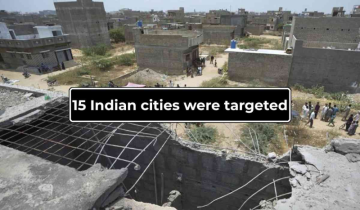As someone who's gone through the grind of getting ready for competitive exams and has guided many aspirants, I can say one thing for certain: passing the Reserve Bank of India (RBI) Grade B exam isn't easy. It's a respected, tough, and very rewarding chance to work for India's central bank. But to get there, you need a plan, and one of the best ways to make that plan is by looking at RBI Grade B previous year question papers.
After looking at papers from the last ten years and helping students succeed, I've spotted 10 common patterns that keep showing up in these tests. Knowing these can give you a big advantage. Let's get into it!
Phase 1: The Preliminary Exam
-
General Awareness Dominates
RBI Grade B Phase 1 is a 200-mark test that has four sections: General Awareness (GA), English Language, Quantitative Aptitude, and Reasoning. Out of the four sections, GA has historically dominated the Phase 1 paper, worth 80 marks. It's the past 3-5 months from which the GA questions come.
For example, questions on the RBI policies, monetary policy reports, banking reforms, and government schemes.
-
Quantitative Aptitude Loves Data Interpretation
Every year, quantitative aptitude gives nightmares to RBI Grade B aspirants. This is a section where the cutoff goes the lowest among all four sections. The whole section is filled with time-consuming, complicated questions that are required to be done in 25 minutes.
However, Data interpretation questions are a staple, making up about 50-60% of the whole QA section. Topics like percentages, ratios, and averages are questioned in these DI sets. You can easily expect at least 15 questions out of 30 in QA every year.
-
Reasoning Focuses on Puzzles and Seating Arrangements
The reasoning section (60 questions) can be highly confusing if you are unprepared. Puzzles (floor-based, box-based) and seating arrangements (circular, linear) dominate with at least 4 sets every year.
Other types of puzzles also appear in this section, making it essential to practice as many puzzles as you can. Analytical reasoning, like blood relations and syllogisms, also appears but is less complex. You need to balance both puzzles and analytical reasoning.
-
English Tests: Comprehension and Vocabulary
The English Language section (30 marks) consistently features Reading Comprehension (RC), accounting for 10–12 marks. These can be based on random topics. Vocabulary-based questions (synonyms, antonyms) and cloze tests are also common.
RCs having technical jargon surprise a lot of candidates every year. So, you need to practice a lot of Reading Comprehension before you call yourself ready for this exam.
-
Time Management Is Key
Phase 1 has sectional time limits (25 minutes for GA, Maths, and Reasoning, and 45 minutes for Reasoning). Past papers reveal that candidates often struggle to complete Reasoning and Quant within the time.
Practicing under timed conditions helps you balance speed and accuracy. It's not like you have to attempt every question on the paper. But, RBI Grade B Phase 1 questions are designed in a way that even questions to even cross the cutoff become incredibly difficult.
Phase 2: The Main Exam
- Economic and Social Issues (ESI) is all about Current Affairs
The ESI paper in Phase 2 (100 marks) blends static and dynamic topics. However, past year papers have shown that about 90% questions in ESI come from current affairs, especially RBI reports (e.g., Monetary Policy Report), government schemes, and international organizations like the IMF and WTO.
A few static questions could come in objective questions but they are very less in number.
2. Finance and Management (FM) Tests Banking Knowledge
The FM paper (100 marks) is equally divided into the Finance and Management sections (50 marks for both). In Finance, the RBI asks about banking terms, financial institutions, and market instruments. However, questions from latest RBI notifications from the past 6 months are also quite common in the Finance exam. For example, a 2023 paper had a 10-mark question on AT-1 Bonds, which was in the news.
Management questions focus on leadership theories, motivation, and corporate governance.
3. Descriptive Questions Are High-Value
Both ESI and FM papers have descriptive questions (10 or 15 marks each), making up 50% of the score. This has been included in RBI Grade B curriculum since 2021. If you know about a topic and can write about it in your own words, descriptive questions can fetch you high marks.
These require in-depth answers, often asking for analysis or comparisons. Use bullet points and clear headings in your answers to impress examiners.
Final Thoughts
The RBI Grade B examination serves as an entrance to prestigious career opportunities, and previous test papers function as your roadmap toward achievement. Past papers show which topics examiners value the most as well as the most effective time allocation for studying.
These patterns will serve as your guide to master puzzles and stay informed about RBI policies and practice essay writing. Start your practice right now by getting past papers while using a timer. You’ve got this!
© Copyright 2025. All Rights Reserved Powered by Vygr Media.









